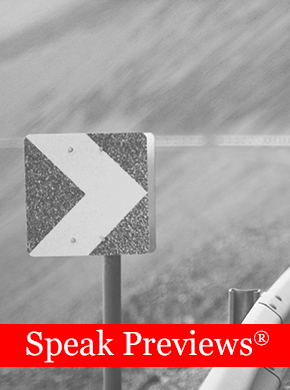Planning her presentation to a budget board, a college administrator faced a challenge. Her department was so understaffed that it could not provide essential services to students. She needed funding to hire more people—but then, who at the college didn't? She had great data to support her case—but then, who didn't? As she worked through her messages and evidence, she grappled with how to make her request urgent and memorable to the board. She needed to differentiate it from others that could also demonstrate a need. She eventually hit upon the idea of using an image early in her presentation, one that represented her central message.
For her first slide she selected an image of Janet Leigh from the movie "Psycho," the image in which Leigh's character looks at the camera in horror, her face contorted into helplessness and doom. The image was a brilliant choice, for it expressed not only the situation in the presenter's department but the effect that understaffing had on those who were not receiving required services. The presenter followed her opening words with that image and returned to it at times to punctuate the data she provided in her presentation.
That image had the board from the start; they chuckled, they listened, they understood. They accepted the administrator's message. Her request was rated highest priority and placed first in line for additional budget. If any funds were shaken loose, they would first be hers. She had prepared carefully, knew her audience, had defined major messages and gathered supporting evidence. She believes that it was the "Psycho" image that placed her request first among equals.
Visuals can be powerful in a presentation because they can engage listeners, illustrate messages or prod emotions. But if visuals fail to establish at-a-glance comprehension, they alienate the audience and endanger its acceptance of messages.
Many presentations rely heavily upon PowerPoint slides of bulleted lists. If you've seen such presentations, you know that those bullets can be deadly. Afterwards you may remember that there was a bulleted list but be unable to recall what message those bullets were supposed to communicate. It becomes a blur, offering little to take away.
As a presenter, how can you avoid such a waste of a communication opportunity? Try thinking outside the bullet. What sort of visual might best enhance your message? What visual represents or encapsulates its essence? An image or picture might be most effective.
Scores of sites on the internet provide images that are free for corporate use. They are not hard to find, and searching for one will often help you clarify or define meaning. Microsoft's PowerPoint has photos and clip art as well as instructions on how to crop images, change their colors, and make other edits. You probably have photos in your own collection that would be suitable—heaps of rubble created during home renovation, a fence stretching across the plains of Kansas, mist settling on a mountain in Costa Rica. Any photo software program will help you customize them for use in a presentation.
Explore images and their potential for expressing your message. A fitting image will anchor itself in the minds of your listeners, giving them a message they can remember and connecting to them in a way that persuades them to act upon it. One picture can indeed be worth far more than a box of bullets.



